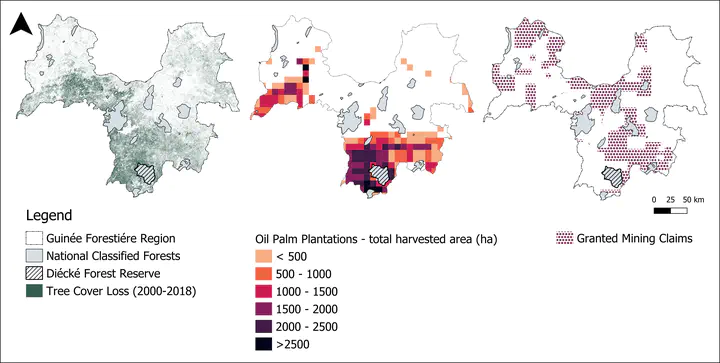Revisiting the second largest forest of Guinea a decade later: conservation status, chimpanzee presence, and threats in Diécké, Korohouan Area
 Image credit: Katarina Almeida-Warren
Image credit: Katarina Almeida-WarrenAbstract
The Diécké Forest is the second largest classified forest in Guinea and is an area of high conservation significance for many species including the western chimpanzee, Pan troglodytes verus. It has attracted several research expeditions focusing on chimpanzee presence and tool use since 1993. These studies also identified several instances of human activities impacting primates and other wildlife. Aside from Bossou, Diécké is the only other locality in Guinea where chimpanzees are known to crack nuts with tools. We visited the Diécké Forest in November 2018 to review the status of chimpanzee presence, nut-cracking activity, and conservation threats. We report our findings along with an up-to-date overview of relevant historical, sociopolitical, environmental, and scientific developments in the vicinity. Our survey took place in the vicinity of Korohouan village where research on chimpanzee nut-cracking had previously been conducted. We found scarce evidence of chimpanzee presence in the area (n = 3) with no recent traces of nut-cracking or other activities. Conversely, we found a high incidence of hunting (6.31/km) within the protected area, with smallscale agriculture and commercial activities predominating forest fragments outside the protected area. The intensification of human activities in Diécké pose a serious threat to one of the largest remaining lowland evergreen forests of West Africa and the endangered species that inhabit it, such as the Western chimpanzee. Our study highlights the need for urgent and concerted conservation action and provides an important case study on the disappearing cultural heritage of a chimpanzee population in a human-impacted habitat.